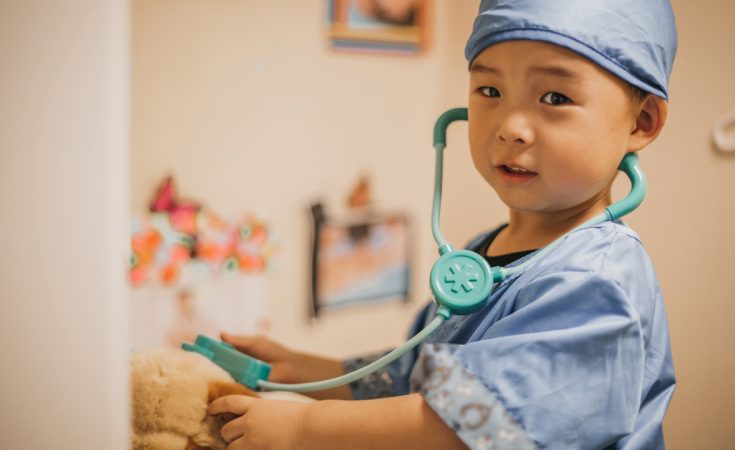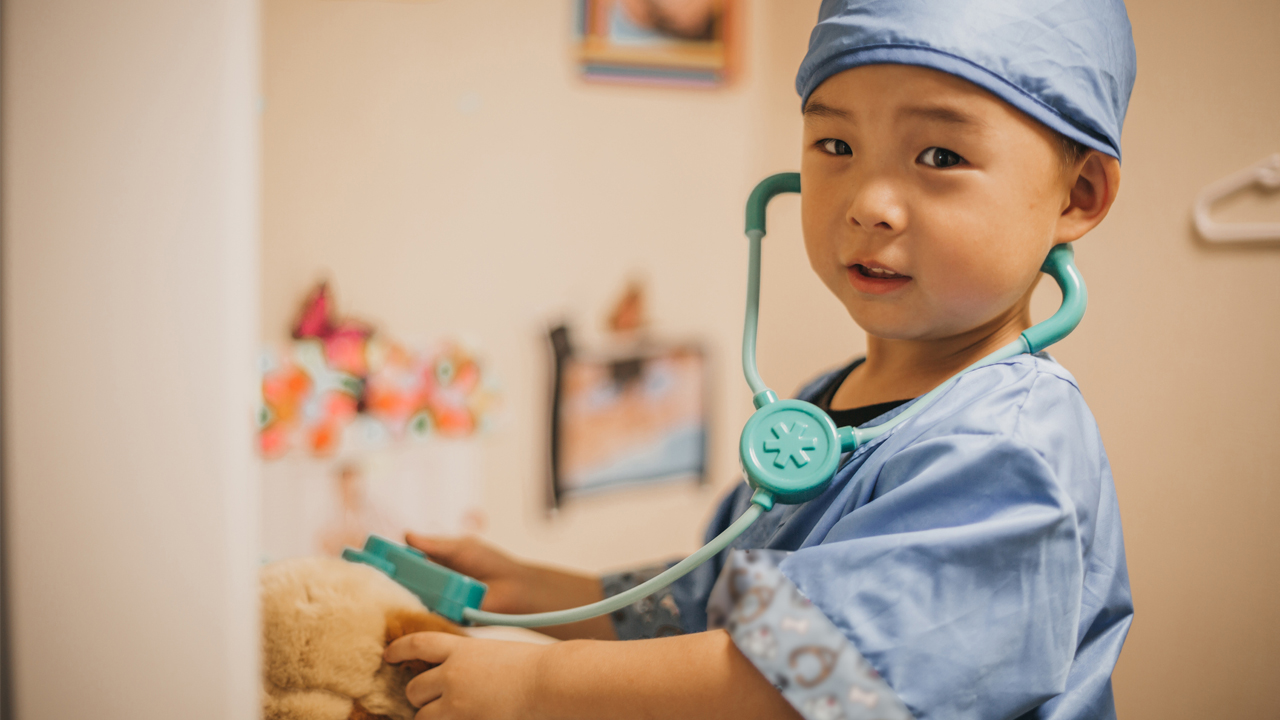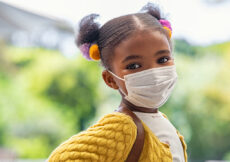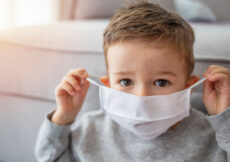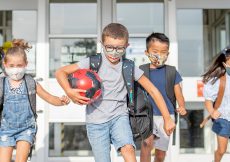You’d be forgiven for thinking that COVID-19 was the only important health issue this year. But kids’ health is about so much more than viruses, and while media outlets and even medical journals focused on COVID-19 issues month after month, doctors and researchers kept investigating other topics, like fever, sore throats and child safety. As a paediatrician and a mom, I kept my eye out for game-changing developments in kids’ health this year. Here are five that are key for us all to know about.
New fever guidelines
Fever is one of the most common and worrisome symptoms in babies because it can be the first sign of a serious bacterial infection, known as an SBI. For more than 40 years, doctors have been trying to develop evidence-based guidelines to predict which babies are at high risk and which are at low risk of these SBIs, which include sepsis (infection in the blood), urinary tract infections and meningitis. The risk of blood infections, in particular, has been difficult to predict soon after a fever begins because it can be present without having obvious symptoms or laboratory test indicators.
Until now, many hospitals have tested all babies under two to three months who have a fever for all three SBIs with urine and blood tests as well as a lumbar puncture, a needle inserted in the back to withdraw cerebrospinal fluid. They have also treated them with intravenous antibiotics and admitted them to the hospital, even when the babies looked well.
Now the American Academy of Pediatrics has released new guidelines (that Canadian doctors will follow as well) to help doctors make a wider range of choices about testing and treatment. Babies under three weeks of age still need all the testing and treatment that was offered before, but the good news is that after three weeks of age, they may not need a lumbar puncture, as much treatment as before or a stay in hospital—all determined by algorithms doctors can now follow. Young babies with a fever should always see a doctor but parents can now feel reassured that doctors have evidence-based guidelines in many situations that can help them “safely do less.”
Swabs are not just for COVID-19
When our kids develop a runny nose or sore throat, it has become common practice for us to take them for a swab of their nose and/or mouth to see if it’s COVID. But when would another type of swab, such as a swab for strep throat, be needed?
Most throat infections (pharyngitis) are caused by viruses, but 20 to 30 percent are caused by group A streptococcus bacteria. Distinguishing between viral and bacterial causes of a sore throat is important because viral infections only need symptom relief (ie: pain medication, fluids, soft foods and rest) while group A streptococcus infections need treatment with antibiotics to prevent complications such as abscess, blood infection or permanent heart valve damage in acute rheumatic fever.
The Canadian Paediatric Society recently published guidance on when to swab sore throats and/or treat for bacterial infections. If school-aged children have three or more of the following criteria, they should have a swab for strep throat: fever, swollen tonsils or pus on the tonsils, tender lymph nodes at the front of the neck and no cough. A helpful tip is that children with strep throat typically don’t have cold symptoms, such as runny nose and cough. Children under three years of age rarely develop strep throat.
So, if your child has a sore throat they might need a throat swab for strep. Symptoms usually resolve within four to five days, with or without antibiotics. But ten days of amoxicillin or penicillin is still recommended to prevent serious complications.
Clear data on sleep-related deaths
Health Canada and the Canadian Paediatric Society jointly published a statement on safe sleep and reducing sudden infant deaths in Canada this October. This was in response to new data from the Canadian Coroner and Medical Examiner Database from 2015 to 2020 showing that of the 1,700 deaths in infants under one year of age, one in 15 of these happened during sleep and most were “sudden and unexpected.” An unsafe sleep environment was noted in more than 90 percent of cases and nearly 70 percent of sudden and unexplained deaths happened with the baby sleeping in a location not intended for infant sleep.
Although parents have heard about safe sleep for decades, this statement clearly outlines the data to help parents make informed choices, recognizing that providing the perfect sleep environment for your baby every time they sleep is not an easy task.
According to the statement, the most important factors include: Never placing your baby on their front to sleep, not smoking during pregnancy, and keeping your baby’s environment free from second-hand smoke throughout infancy. But even if you can’t stop smoking, reducing the number of cigarettes during pregnancy or the second-hand exposure during infancy decreases the risk.
Breastfeeding for a minimum of two months cuts the risk of SIDS by half. You should keep soft toys and bedding out of sleeping areas and if your baby uses a sleep sack, make sure it is sized correctly so they can’t slip down into it. Have your baby sleep in their own crib, cradle or bassinet in your bedroom for a minimum of six months. Remember to modify the surface as the baby becomes more mobile—dropping the level of the crib mattress and stopping using the bassinet attachment for playpens once they can roll over. Sharing a bed or couch with an adult, another child or a pet increased the risk of sudden infant death, particularly if the adult has used alcohol or another substance, or is overly tired.
The data point to many factors that influence sleep safety and sudden infant deaths are thought to be a complex problem related to many factors. But this gives us lots of ways to modify our babies’ sleep environments to keep them as safe as possible.
Head injuries and babywearing
Babywearing with slings, carriers, wraps and other products is common and may even promote breastfeeding and attachment. But one U.S. study this year analyzed injuries associated with these products. The short abstract was presented at the conference of the American Academy of Pediatrics and the full study has yet to be published. The research, involving more than 14,000 emergency department visits for babywearing injuries over ten years, found that more than 60 percent of the visits were for infants under 6 months of age. In this group, 83 percent had head injuries and 19 percent required hospital admission. Other children had fractures or cuts. Just under one-quarter of all cases involved a caregiver fall.
While paediatric organizations have provided safety tips on positioning infants safely while in a carrier, less attention has been paid to minimizing falls. Health Canada recommends not using carriers for babies born prematurely and using extra caution for babies under four months of age. They suggest being particularly careful when putting babies into or pulling them out from a carrier or sling. They also recommend not using the carrier or sling during higher risk activities such as running or cooking. The American Academy of Pediatrics advises being careful when bending over and suggests bending at the knees instead of the waist while using an infant carrier. Ensuring the carrier is the right size for your baby and using all straps securely can also minimize falls.
What is actually an emergency?
Children’s hospital emergency departments have seen the number of patients wax and wane throughout the pandemic. Early on, the departments were empty. Now departments are often full to capacity, with many services, like counsellors, autism services, respite care and in-home support programs continuing to have reduced operations and community doctors’ offices and clinics being unable to see children with infectious symptoms.
A study of 18 emergency departments in British Columbia showed that paediatric visits decreased to one-third of the usual rate at the height of public health measures in that province. However, children with serious illnesses and injuries still showed up at the hospital and were admitted as needed. It was the less serious cases that stopped arriving for care. Orthopedic, fever and gastrointestinal problems were the three types of problems accounting for the greatest decrease in visits to the emergency department.
For the first time in Canada, some children’s hospital emergency departments began to see patients virtually. One study in Ottawa showed that 87 percent of parents were happy with the experience, and fewer than 17 percent of cases were referred for in-person assessments.
It is not clear yet what lasting effect the pandemic will have on how emergency departments operate and when people choose to use them but 2021 showed us that parents can get at least some of their children’s health needs met without having to visit the emergency department.
COVID-19 will still dominate the headlines into 2022 but stay tuned for other new developments about children’s health.
Michelle Ward is a paediatrician, associate professor and journalist in Ottawa.

